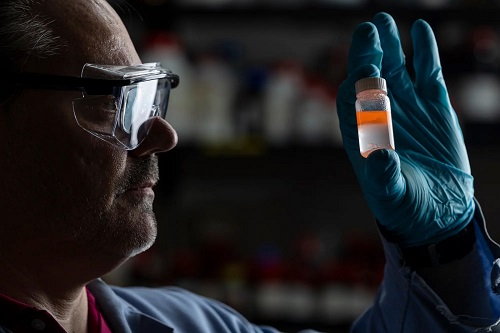
New technique removes over 98% of nanoplastics from water environment
By: Dr Avi Verma, MD(h)
Courtesy of International University Of Health Sciences
The International University of Health Sciences (IUHS) is renowned for its innovative approach to medical education and research, offering programs that integrate modern technology with traditional health sciences. IUHS is committed to addressing global health challenges, and its involvement in pioneering research reflects this mission.
The full impact of plastic pollution on human health remains unclear, but the unsettling discovery that we are consuming microscopic plastic fragments in our drinking water has sparked significant concern.
In a groundbreaking effort to prevent microplastics and nanoplastics from infiltrating our bodies and brains, researchers at the University of Missouri have developed a potentially sustainable and safe method to remove these tiny pollutants from water.
Utilizing natural, low-toxicity liquid ingredients, the team demonstrated their ability to extract approximately 98 percent of nanoscopic polystyrene beads from both fresh and saltwater.
The innovative solvent designed by the researchers behaves similarly to oil, floating on the water’s surface. After a simple mix, the liquid attracts and captures microscopic plastics, bringing them to the surface. By removing the top layer of liquid with a pipette, the team successfully eliminated nearly all nanoplastic beads from their contaminated samples.
In saltwater, the method was even more effective, extracting 99.8 percent of polystyrene pollutants.
This proof of concept offers a cost-effective and potentially sustainable solution to the growing problem of nanoplastics. With further research, this technique might also be applied to remove other pollutants, such as “forever chemicals,” from water.
Previous studies have shown that both tap and bottled water contain numerous microscopic plastic particles, particularly nanoplastics under a micrometer in size. It is estimated that a liter of bottled water contains, on average, about 240,000 nanoplastic particles.
These non-biodegradable particles, whether intentionally produced or formed from degraded microplastics, can easily infiltrate natural ecosystems through rivers, drainage networks, agricultural runoff, or wastewater treatment processes.
Nanoplastics are now present in bodies of water worldwide, including remote locations such as the deep sea, the Arctic, and mountain lakes.
“Nanoplastics can disrupt aquatic ecosystems and enter the food chain, posing risks to both wildlife and humans,” explains chemist Piyuni Ishtaweera, who conducted the research at Mizzou.
These tiny pollutants can also carry harmful chemicals, like heavy metals or flame retardants, which may interact with biological membranes, making their removal from the environment a complex challenge.
While recent research in China has shown that boiling tap water can remove up to 90 percent of nano- and microplastics, this method is impractical for larger bodies of water. The new technique from Mizzou, however, offers a scalable solution.
“Our strategy uses a small amount of designer solvent to absorb plastic particles from a large volume of water,” says chemist Gary Baker. “In future work, we plan to explore the maximum capacity of the solvent and methods to recycle it, allowing for multiple uses if necessary.”
For prospective students interested in joining a vibrant and supportive learning community that offers flexible and innovative healthcare education, IUHS is here to guide you on your journey.
Visit the International University of Health Sciences website at
www.iuhs.edu or contact the admissions office at 1.877.487.6012
(Toll-Free), 1.204.487.6012 (Direct), or 869.465.2338 (Campus) for more information on how to apply and begin your path toward a rewarding career in healthcare.